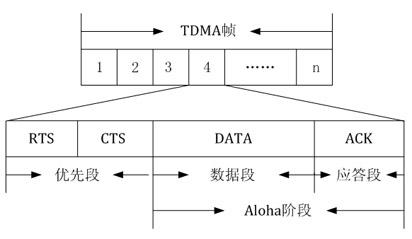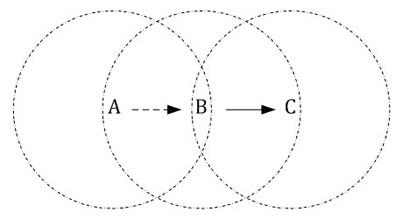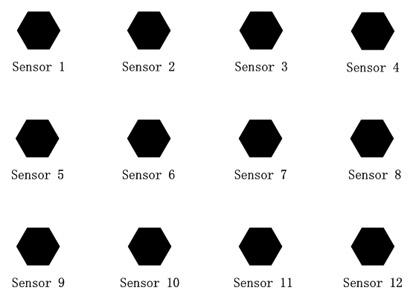Method for realizing water sound sensor network MAC (Media Access Control) protocol based on ALOHA and TDMA (Time Division Multiple Access)
A technology of underwater acoustic sensor and implementation method, applied in wireless network protocol, network topology, transmission system and other directions, can solve the problems of wasting time slot, increasing end-to-end delay, ignoring channel space reuse, etc., and achieving good achievable The effect of stability and high network performance
- Summary
- Abstract
- Description
- Claims
- Application Information
AI Technical Summary
Problems solved by technology
Method used
Image
Examples
Embodiment 1
[0046] Such as figure 1 Shown, the present invention comprises following process:
[0047] 1 . Deduce the time limit for a node to receive data frames from other nodes while waiting for the acknowledgment reply frame ACK after sending data in the main time slot;
[0048]Suppose the distance between node A and node B, node B and node C is set as ,Unit is ; Carrier speed of propagation ,Unit is ; The data rate of the network is ,Unit is ;The length of the data frame (DATA frame) is set to , the length of the response frame (ACK frame) is set to , the unit of frame length is .
[0049] In a certain main slot of Node B, suppose R Time is the start time of the RTS segment, C Time is the start time of the CTS segment, D The time is the start time of the DATA segment, A Time is the start time of the ACK segment. Node B has sent the DATA frame to node C, and the ACK frame that node C replies to node B will be in A Time to start sending out.
...
Embodiment 2
[0079] against Figure 4 The network topology shown, the simulation parameters are: signal propagation speed 1500 m / s, the communication range of the node Range 1500 m , the data rate of the network D 1000 bit / s , data frame length L D 1024 bits , RTS and CTS frame length L C 88 bits , ACK frame length =104 bits , the preset threshold of the counter is 5, the channel error rate is 0.003, and the buffer queue size of the MAC layer is 256000 bits , the simulation time is 7 h . The frame length is 11.3 s , where the durations of the RTS segment, CTS segment, DATA segment, and ACK segment are: 1.2 s , 1.2 s , 7.7 s , 1.2 s . The packet generation time interval of the simulated transaction flow is a fixed value, a total of 37 groups of transaction flows are simulated, and the arrival time interval is 5 s ,6 s , 7 s ,8 s ,9 s , 10 s , 15 s , 20 s , 25 s , 30 s , 35 s , 40 s , 45 s , 50 s , 55 s , 60 s , 65 s , 70 s , ...
PUM
 Login to View More
Login to View More Abstract
Description
Claims
Application Information
 Login to View More
Login to View More - R&D
- Intellectual Property
- Life Sciences
- Materials
- Tech Scout
- Unparalleled Data Quality
- Higher Quality Content
- 60% Fewer Hallucinations
Browse by: Latest US Patents, China's latest patents, Technical Efficacy Thesaurus, Application Domain, Technology Topic, Popular Technical Reports.
© 2025 PatSnap. All rights reserved.Legal|Privacy policy|Modern Slavery Act Transparency Statement|Sitemap|About US| Contact US: help@patsnap.com



